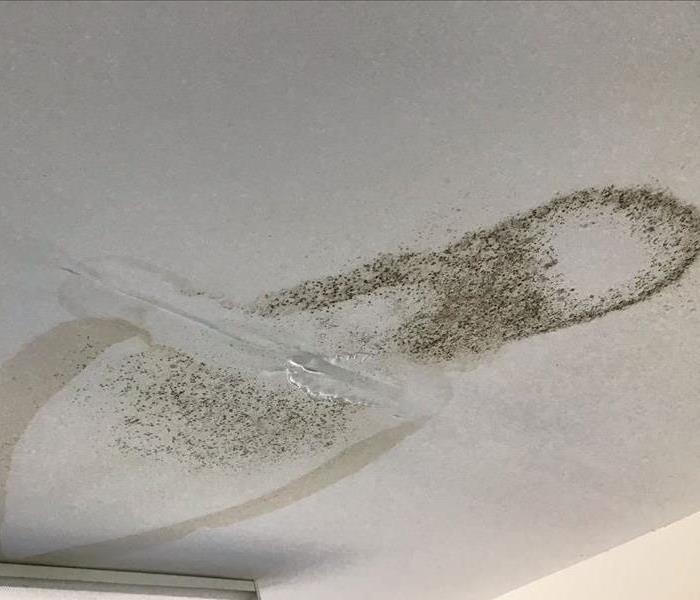Painting Over Mold: 3 Reasons Why It's A Bad Idea
11/2/2021 (Permalink)
When you paint over mold, you are not removing the problem.
The professionals at SERVPRO of North Fulton have heard many horror stories about unprofessional mold remediation processes that ended up causing more damage. Unfortunately, most mold removal issues start with untrained mitigation professionals.
All mold mitigation professionals know not to simplify the mold removal process by simply repainting over a mold issue. Instead, a certified mold remediation company will remove the mold damage while killing the spores with an antimicrobial agent to prevent future growth. Only after the mold is removed will professional mold remediators apply paint to the affected areas.
In the following blog post, we will be explaining three main reasons why painting over mold is not a good idea. Painting over mold may give you a momentary fix, but it can cause more severe issues in the long run.
What is mold?
Mold is a fungus that thrives in moist warm environments. Mold is a known natural component of the outdoor environment, but exposure to indoor sources of moisture can start a severe indoor mold problem. Mold feeds on organic materials such as wood and drywall.
Common signs that mold was painted over without removal
The easiest way to tell whether or not mold was painted over is by inspecting the painted area closely. If you notice that the paint is peeling, chipping, or cracking, you can safely assume that the mold is underneath the pain and the mold damage was covered by a paint application.
Another way to tell if paint was used to cover mold is by looking for discoloration of the paint. For example, mold can sometimes cause paint to darken in certain areas where the mold is present.
The last way to tell if paint was used to cover mold is by smelling the paint or paint-covered area. Mold tends to emit a very unpleasant musty odor, while paint does not.
3 reasons to never paint over mold
1) Paint does not kill mold
Paint is not an antimicrobial that can eliminate mold. In addition, painting over mold won't remove the problem; paint can trap moisture and cause paint to peel off before drying properly.
2) Mold can grow under paint
If you paint over mold instead of having the property professionally removed, there is a good chance that mold spores will still be present in covered areas. In addition, the paint used to cover the mold damage can trap the excess moisture behind the paint, causing the mold to continue to grow under the paint. Continued mold growth can result in future structural issues that are more expensive to mitigate and restore down the road.
3) Ignoring the cause of mold
Part of the professional mold remediation process understands why mold growth is occurring in the first place. For example, a mold growth area may be occurring because of a high humidity area or a leak. Ignoring the cause of the mold damage will likely result in more mold damage.
Wrapping up
We hope you found this blog post informative and have learned the issues of painting over mold damage. When there is mold in a home or business, it is best to hire mold remediation professionals certified by the Institute of Inspection Cleaning and Restoration Certification (IICRC). Trained mold remediation professionals understand the consequences of covering up mold damage rather than properly removing it.
Please contact the IICRC certified professionals at SERVPRO of North Fulton if a previous contractor or property owner used paint to cover up the mold damage in your home or business. Our professionals are available 24/7, 365 days a year.





 24/7 Emergency Service
24/7 Emergency Service
